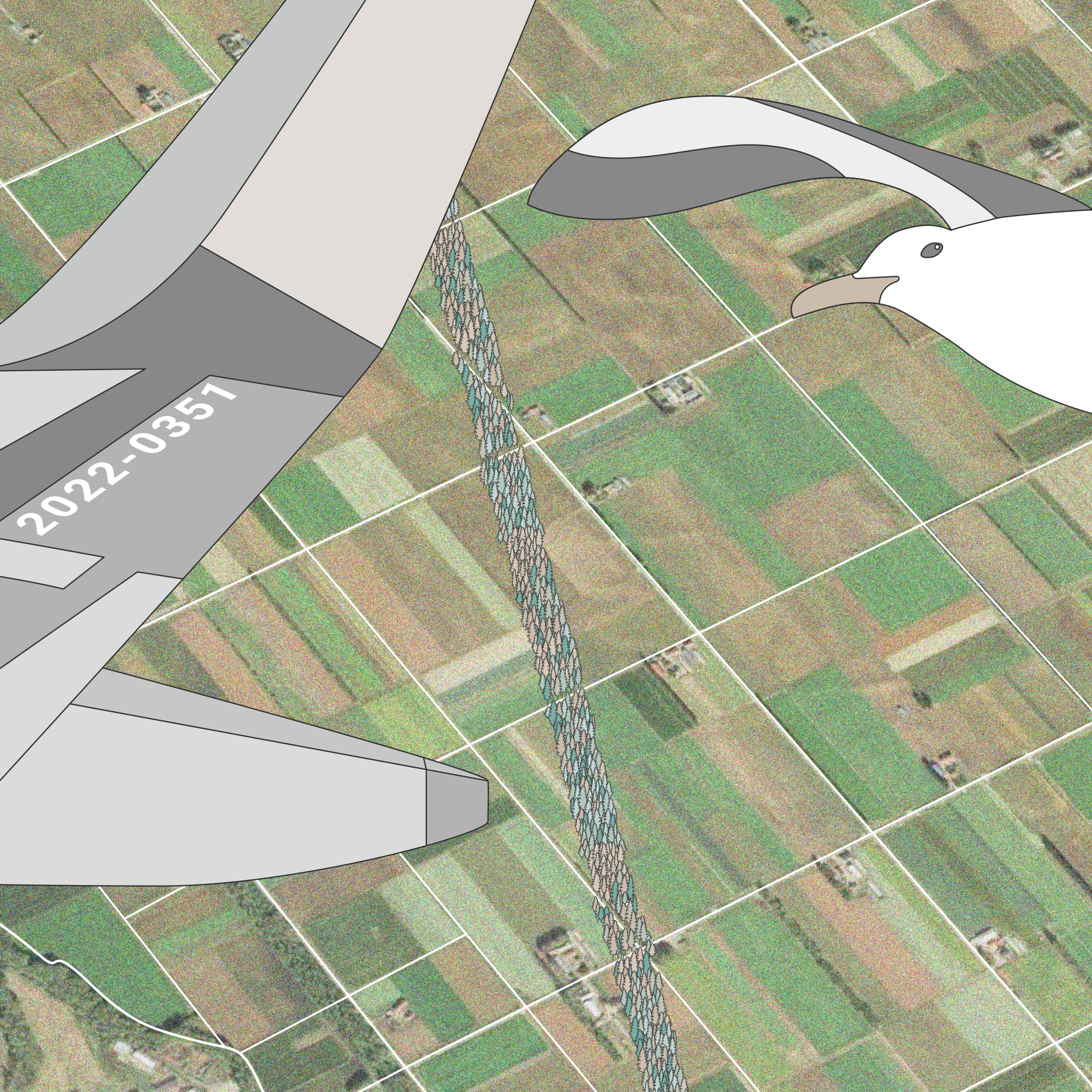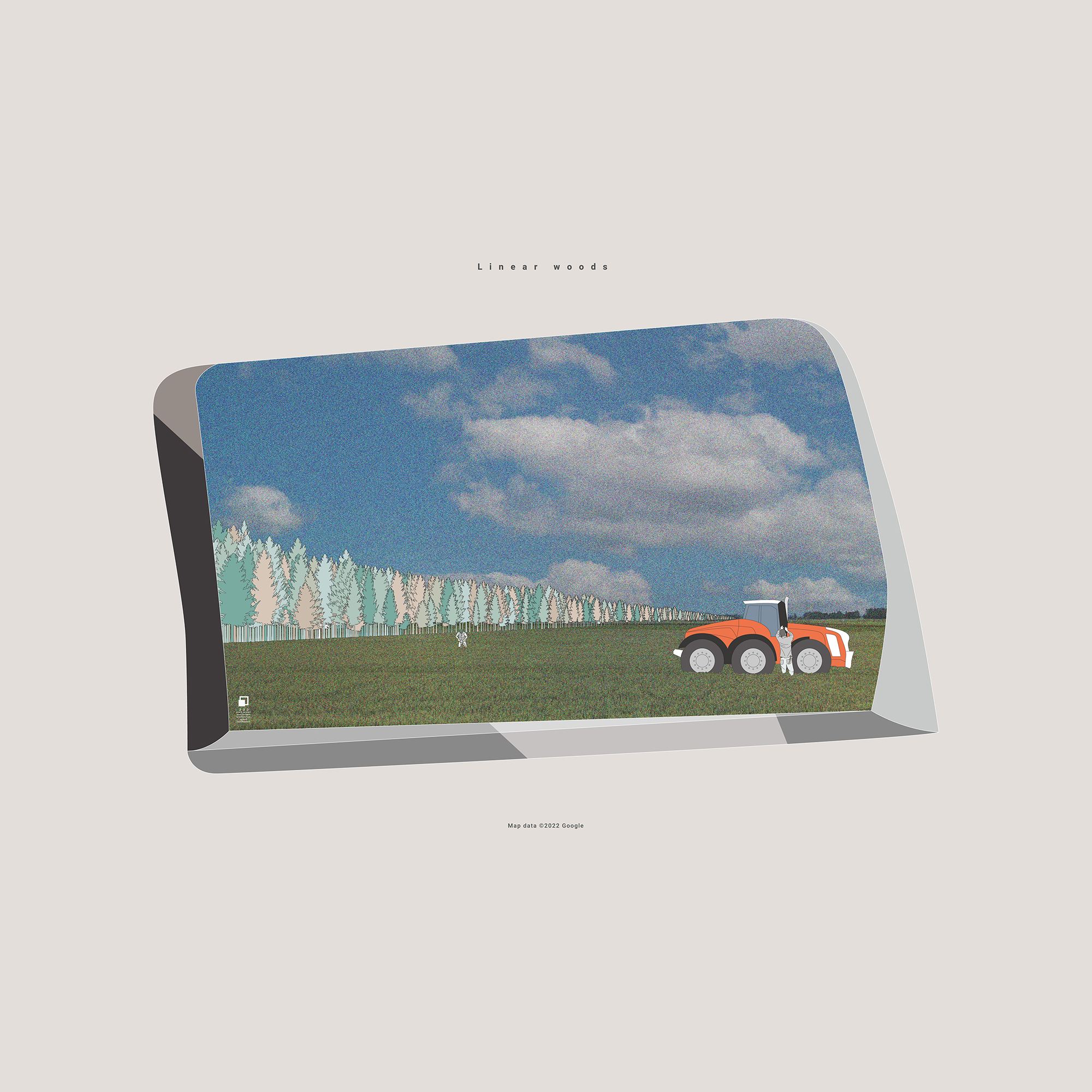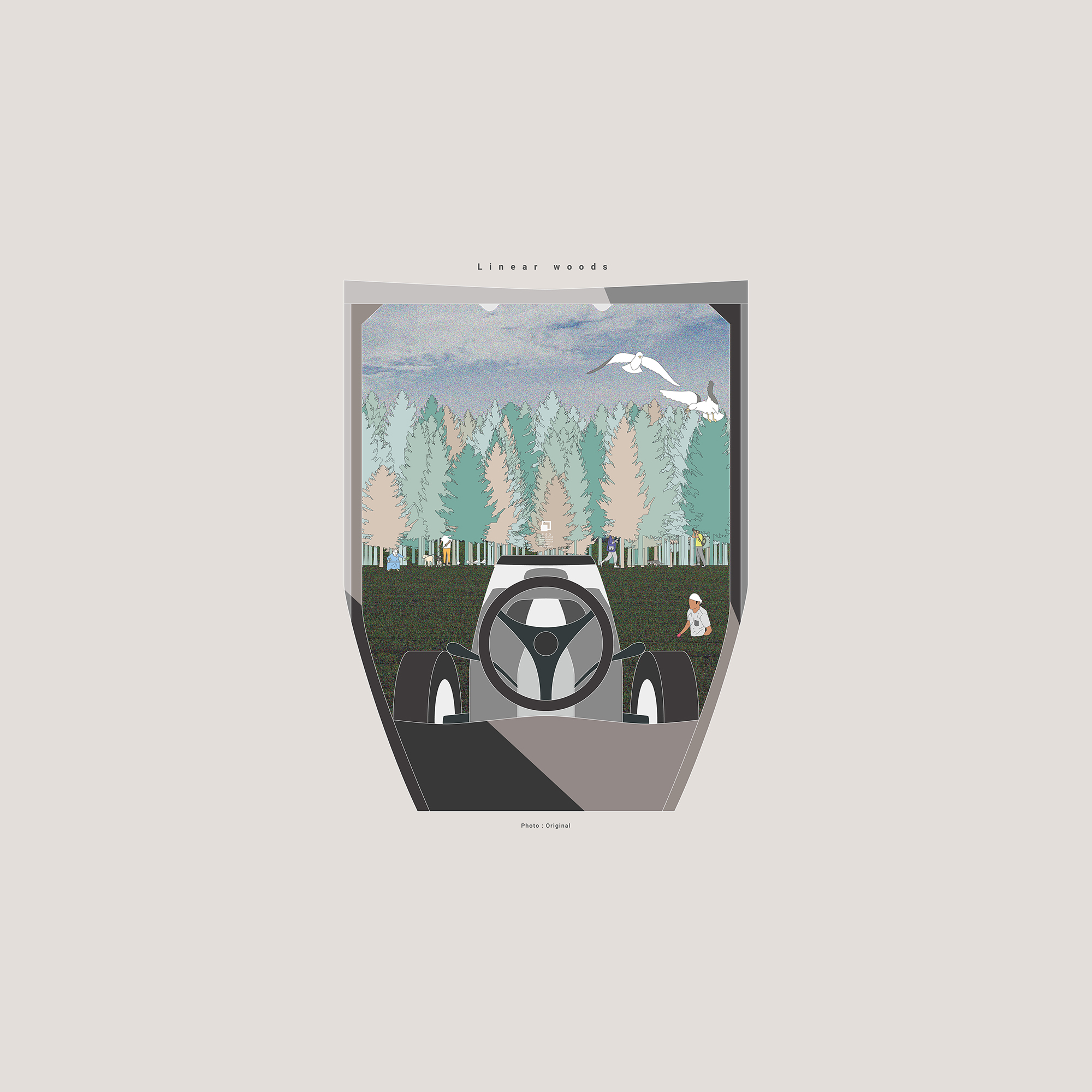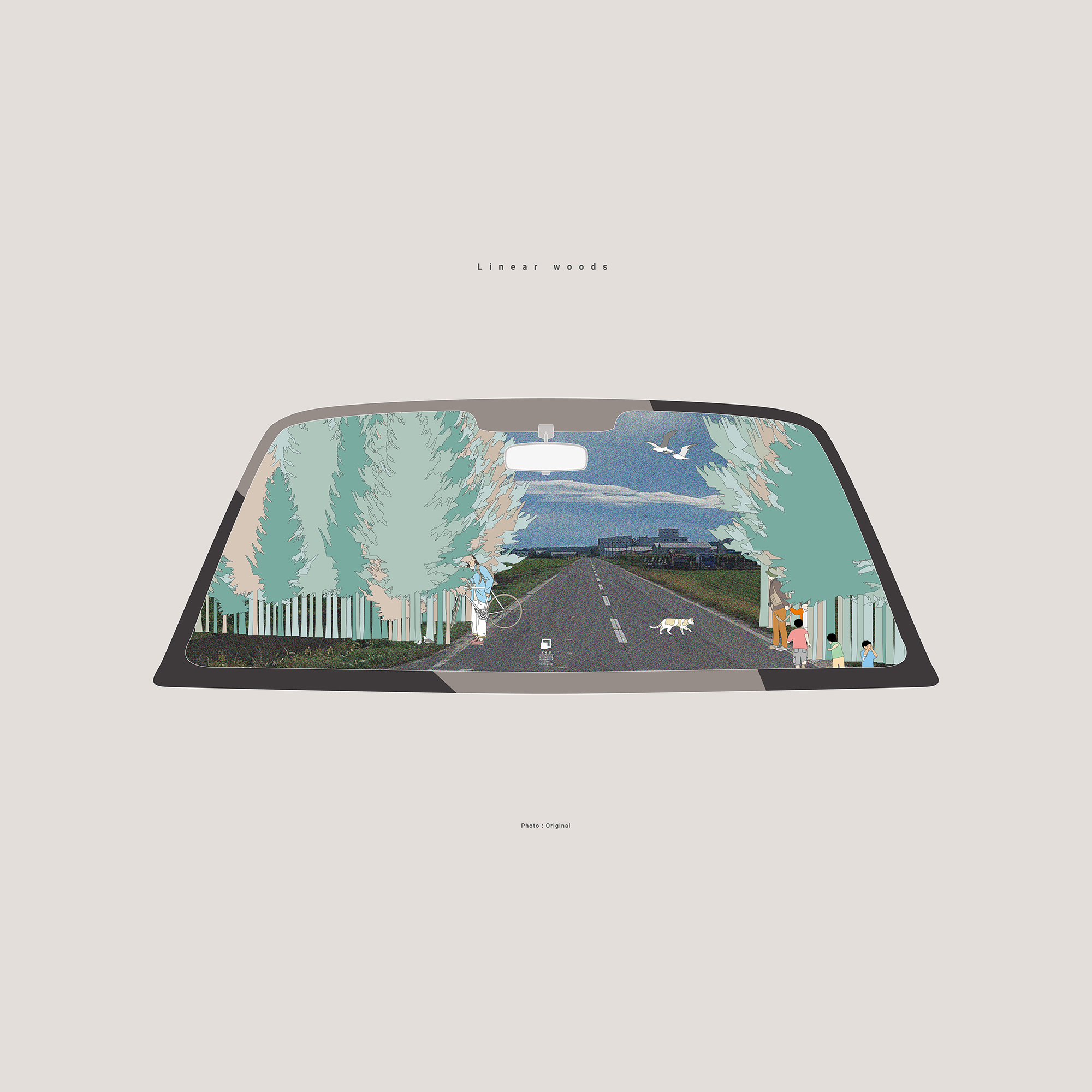kan.i
+ competition
+ 1month
Germans love forests and walking in them. In Germany, the Forest Law allows access to all but a few forests, whether publicly or privately owned. Forests include natural forests with many broadleaf trees and planted forests with many conifers. Forests were cleared and re-created during the medieval and modern periods. Forests were also artificially created in cities.
We believe that cities and forest resources are inextricably linked. As cities flourish, forest resources decline. And then there will be conflicts for forest resources. The forest is demographic, and the city is established. Similarly, we believe that cities and farming villages are two sides of the same coin. Rural areas exist to live in cities, and rural areas cannot exist without cities. They cannot mutually benefit from each other.
In the Tokachi Plain of Hokkaido, the subject site, urban and rural areas were created at the same time and are adjacent to each other. It is not something that should be divided. However, in modern times, the administrative units of urban and rural areas are different. In addition, there are separate plans for urban and rural areas. From this point of view, we have come up with a proposal for a space that visually connects the urban and rural areas, which at first glance appear to be separated. We propose a linear forest as a device to connect urban and rural areas.
In the urban area of Obihiro, there are diagonal streets that once functioned as firebreaks. Today, this diagonal space forms a continuous forest in the city. Just as ornamental planted forests were created in cities, the idea was to create ornamental planted forests in rural areas that diagonally penetrate the grid. This would be connected to the forests and rivers surrounding the city, thus linking the urban and rural areas.
For urban residents, the forest will be used as a direct resource for wellbeing, such as for extended recreational use. For rural residents, it will serve as a windbreak to protect them from the wind and as a shortest logistics route. It will also help to maintain the ecosystem. The commons will become a shared resource, creating a lively atmosphere between urban and rural areas. A linear forest exists as an interchangeable space between urban and rural areas.
Young trees in their maturing stage will absorb more carbon dioxide and grow larger. This will contribute to solutions to environmental problems such as global warming. Mature trees can be expected to be utilized as local resources for the future.
In this proposal, a linear forest is proposed as a device to connect urban and rural areas. By creating the ornamental artificial forests that urban people seek in rural areas, we aimed to create a space that is interchangeable between both urban and rural areas.
ドイツ人は森を好み、森を歩く。ドイツでは、森林法により、公有・私有関わらず、一部を除いた全ての森に立ち入ることが認められている。森には、広葉樹の多い天然林や針葉樹の多い人工林が存在する。中世から近代にかけて森は切り開かれ、再びつくられた。 都市にも、人為的に森がつくられた。
都市と森林資源は表裏一体であると考える。都市が栄えると、森林資源が減少する。そして、森林資源を求めて争いが起きる。森は人口的なもので、都市が成立している。同様に、都市と農村も表裏一体であると考える。都市を生きるために農村があり、農村は都市がないと成立しない。互いに恩恵を受けられなくなる。
対象敷地である北海道十勝平野は、都市と農村が同時期につくられており、隣接している。決して分断するようなものではないと考える。しかし、現代では都市と農村で行政単位が異なっている。また、都市計画、農村計画というように、計画が別れている。ここから、一見別れているようにみえる都市と農村を視覚的に連続させる空間の提案を考えた。 都市と農村を繋ぐ装置として、リニアな森を提案する。
帯広の都市部には、かつて火防線として機能していた斜交街路が存在する。現在、この斜めの空間は都市に連続的な森を形成している。都市に観賞用の人工林がつくられたように、農村にもグリッドを斜めに貫通する観賞用の人工林をつくることを考えた。これを、 都市周辺を囲む森や川と接続させることで、都市と農村を繋ぐこととした。
都市の人にとっては、レクリエーションの延⻑として使われるなど、ウェルビーイングを実現する直接的な資源となる。農村の人にとっては、風に備える防風林としての役割や、 物流としての最短経路となる。また、生態系を維持することにも繋がると考える。共有資源となるコモンズができ、都市と農村のあいだに賑わいが生まれる。都市と農村、両者が交換可能な空間として、リニアな森が存在する。
成⻑期の若い樹木は、二酸化炭素を多く吸収し、大きくなる。地球温暖化などの環境問題に対する解決策に貢献する。成熟した樹木は、未来に向けた地域資源として活用されることが期待できる。
以上、本提案では、都市と農村を繋ぐ装置として、リニアな森を提案した。都市の人々が求める観賞用の人工林を農村にもつくることで、都市と農村の両者が交換可能な空間を目指した。
Linear woods
+ sep 2022
+ competition
+ 1month
Germans love forests and walking in them. In Germany, the Forest Law allows access to all but a few forests, whether publicly or privately owned. Forests include natural forests with many broadleaf trees and planted forests with many conifers. Forests were cleared and re-created during the medieval and modern periods. Forests were also artificially created in cities.
We believe that cities and forest resources are inextricably linked. As cities flourish, forest resources decline. And then there will be conflicts for forest resources. The forest is demographic, and the city is established. Similarly, we believe that cities and farming villages are two sides of the same coin. Rural areas exist to live in cities, and rural areas cannot exist without cities. They cannot mutually benefit from each other.
In the Tokachi Plain of Hokkaido, the subject site, urban and rural areas were created at the same time and are adjacent to each other. It is not something that should be divided. However, in modern times, the administrative units of urban and rural areas are different. In addition, there are separate plans for urban and rural areas. From this point of view, we have come up with a proposal for a space that visually connects the urban and rural areas, which at first glance appear to be separated. We propose a linear forest as a device to connect urban and rural areas.
In the urban area of Obihiro, there are diagonal streets that once functioned as firebreaks. Today, this diagonal space forms a continuous forest in the city. Just as ornamental planted forests were created in cities, the idea was to create ornamental planted forests in rural areas that diagonally penetrate the grid. This would be connected to the forests and rivers surrounding the city, thus linking the urban and rural areas.
For urban residents, the forest will be used as a direct resource for wellbeing, such as for extended recreational use. For rural residents, it will serve as a windbreak to protect them from the wind and as a shortest logistics route. It will also help to maintain the ecosystem. The commons will become a shared resource, creating a lively atmosphere between urban and rural areas. A linear forest exists as an interchangeable space between urban and rural areas.
Young trees in their maturing stage will absorb more carbon dioxide and grow larger. This will contribute to solutions to environmental problems such as global warming. Mature trees can be expected to be utilized as local resources for the future.
In this proposal, a linear forest is proposed as a device to connect urban and rural areas. By creating the ornamental artificial forests that urban people seek in rural areas, we aimed to create a space that is interchangeable between both urban and rural areas.





Copyright © 2018- kansuke ito All Rights Reserved.